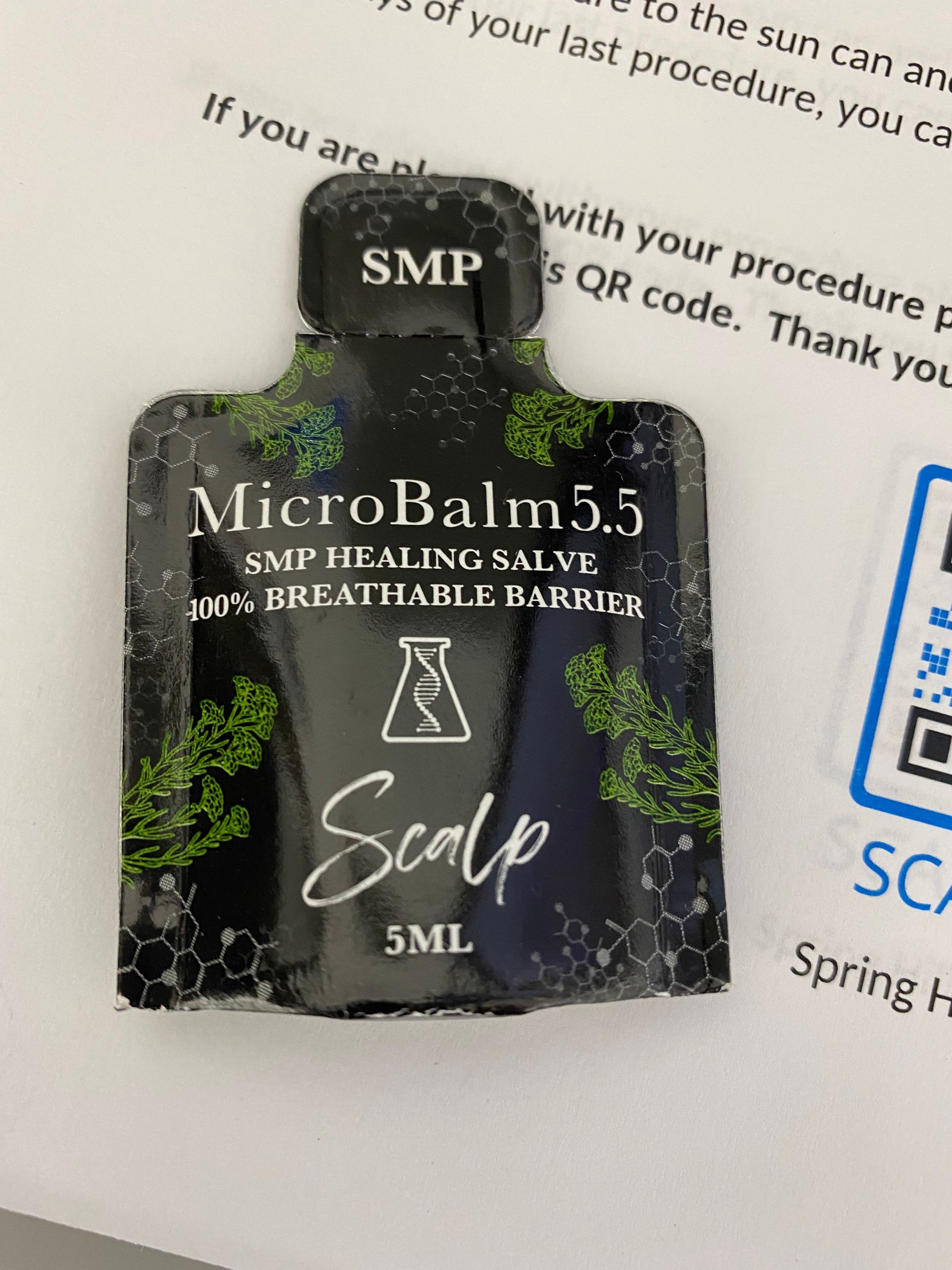Unveiling the Secret: Banishing Hair Transplant Scars Effortlessly
Understanding Hair Transplant Scars
Hair loss can be a daunting reality for many men and women. While hair transplant surgery has emerged as a promising solution, it often leaves behind an unwelcome companion: scars. Understanding hair transplant scars and knowing how to effectively manage and treat them is key to ensuring a successful hair restoration journey.
Hair transplant surgery involves extracting hair follicles from one part of the body, typically the back or sides of the scalp, and implanting them in areas where hair loss has occurred. This process, while effective in restoring hair, can often result in visible scars that may affect the overall aesthetic outcome and potentially impact an individual's self-esteem.
However, the advent of advanced cosmetic procedures provides hope. Ultra Scalp Micropigmentation in Tampa, Florida, for instance, has revolutionized the field of hair restoration by offering an innovative technique known as Scalp Micropigmentation (SMP). This non-invasive procedure effectively camouflages hair transplant scars, providing individuals with a renewed sense of confidence and a seamless hairline.
In this article, we will unveil the secret of banishing hair transplant scars effortlessly. We will discuss the reality of hair transplant scars, how long it takes for them to fade, how to avoid scarring after a hair transplant, common hair transplant procedures and their scarring potential, as well as techniques to minimize and treat hair transplant scars. Our focus will be on Scalp Micropigmentation, a specialized approach by Ultra Scalp Micropigmentation Tampa, offering a game-changing solution to hair transplant scars. Join us as we explore the path to a confident and scar-free hair restoration journey.
The Reality of Hair Transplant Scars: Do They Go Away?
Hair transplant surgery, while being a popular solution for hair loss, leaves a trail that's not as appealing: scars. The question that often lingers in the minds of those considering or having undergone the procedure is, "Do hair transplant scars go away?" The hard truth is, they don't. Hair transplant scars are permanent, a natural and inevitable consequence of the incisions made in the scalp during the procedure.
However, it's not all gloomy. Although they are permanent, hair transplant scars can fade over time, becoming less noticeable. The fading process is a gradual one, and it varies from person to person. Factors such as individual skin tones, healing responses, and the specific hair transplant technique used can influence the visibility and fading rate of these scars.
It's important to note that different hair transplant procedures result in different types of scars. For instance, Follicular Unit Transplantation (FUT) often leaves a linear scar at the back of the scalp, while Follicular Unit Extraction (FUE), a less invasive technique, results in tiny dot scars scattered across the donor area. The visibility of these scars can be affected by the length and thickness of your hair, and they may be more noticeable if you choose to wear your hair short.
The silver lining here is that even though hair transplant scars are a reality, they don't have to be a constant reminder of your hair restoration journey. Advancements in cosmetic procedures, such as the Scalp Micropigmentation (SMP) offered by Ultra Scalp Micropigmentation Tampa, offer effective solutions for concealing these scars, helping you regain your confidence. In the following sections, we'll delve deeper into these scar minimizing and treating techniques. Stay with us as we unveil the secret to effortlessly banishing hair transplant scars.
The Timeline: How Long Does It Take for Scars to Fade After Hair Transplant?
The anticipation of waiting for hair transplant scars to fade can feel like an eternity. However, understanding the healing timeline can equip you with patience and realistic expectations.
Scarring is a natural outcome of any invasive procedure, including hair transplantation. Regardless of the specific hair transplant technique used, be it FUE (Follicular Unit Extraction) or FUT (Follicular Unit Transplantation), scarring is inevitable. Yet, the extent and visibility of these scars can vary significantly depending on the surgical method, your skin's healing properties, and the care you give to your scalp post-surgery.
In the initial days following the procedure, scabs form on the scalp. These are a normal part of the healing process and typically disappear within 10 days. The incision sites might be red during this period, which gradually start to fade.
As weeks turn into months, the scars continue to mature. They begin to turn white and become less noticeable. However, the exact timeline for this fading process varies for each patient. Factors such as skin tone, overall health, and the body's unique healing response influence the speed at which scars fade. It's also important to note that while scars can become less noticeable over time, they are permanent and never completely disappear.
For instance, FUT scars, which are linear and often take several years to mature, can be concealed effectively with longer hair. Even FUE scars, characterized by tiny areas of decreased pigment, can become less visible over time, especially with the aid of specialized treatments like Scalp Micropigmentation (SMP).
At Ultra Scalp Micropigmentation Tampa, we understand that waiting for scars to fade can be frustrating and affect your self-confidence. That's why we provide advanced solutions like SMP to help accelerate the process of concealing hair transplant scars, creating the appearance of denser hair and boosting your self-esteem.
Remember, hair transplant scars fading is a journey, and every journey takes time. While waiting can be difficult, it's essential to focus on the end goal - a fuller-looking scalp that helps you feel more confident. As we transition into the next section, we'll look at the various ways to prevent or minimize scarring after a hair transplant.
Prevention: How to Avoid Scarring After Hair Transplant?
Let's face it, embarking on a hair transplant journey means dealing with the potential of scars. But rest assured, there are effective ways to minimize the risk and visibility of scarring. Here are some actionable strategies for you to avoid scarring after a hair transplant.
Avoid Sun Exposure: One of the best ways to prevent scarring is to protect your scalp from harsh sunlight. Sun exposure can darken scars, making them more noticeable. Using a sunscreen that is SPF 30 or higher, and reapplying it regularly, especially after swimming or exercising, will guard your skin against damaging UV rays.
Aftercare is Critical: Following your surgeon's aftercare instructions to the letter is essential. This often includes avoiding strenuous activities that could strain the scalp and disrupt healing, as well as keeping the scalp clean to prevent infections.
Choosing the Right Procedure: The type of hair transplant procedure you choose can also impact scarring. For example, FUT (Follicular Unit Transplantation) might result in a more noticeable scar compared to FUE (Follicular Unit Extraction). It's crucial to discuss this with your surgeon before deciding on a procedure.
Healthy Lifestyle: Maintaining a healthy lifestyle can enhance your body's healing process. Proper nutrition, regular exercise, adequate sleep, and avoiding smoking or alcohol can significantly reduce the chances of noticeable scarring.
Expert Surgeon Selection: Lastly, choosing a skilled and experienced surgeon plays a crucial role in minimizing scarring. A proficient surgeon will ensure precise incisions and sutures, leading to less noticeable scars.
Now that we've covered prevention strategies, it's important to remember that some scarring is unavoidable and natural with any surgical procedure. But what if you already have hair transplant scars that bother you? The next sections will delve into the different types of hair transplant procedures and the techniques used to treat the scars they may leave behind. Stick around as we explore the world of Follicular Unit Transplantation (FUT) and Follicular Unit Extraction (FUE) next.
Common Hair Transplant Procedures and Their Scarring Potential
Let's travel through the two most prominent types of hair transplant procedures — Follicular Unit Transplantation (FUT) and Follicular Unit Extraction (FUE) — and the scarring potential each one carries. By understanding these procedures, you can make an informed decision and prepare yourself for the journey ahead.
Follicular Unit Transplantation (FUT)
The first stop on our tour is the Follicular Unit Transplantation (FUT) method. Often referred to as the 'strip method', FUT involves the removal of a thin strip of scalp from the back of the head. This strip is then microscopically dissected into smaller follicular units which are carefully transplanted into the recipient area.
As revolutionary as it may sound, this method does come with a potential drawback: scarring. The strip removal process may leave behind a linear scar, especially prominent if the person keeps their hair short. The visibility of this scar can sometimes affect the confidence of the patient, drawing unwanted attention and questions.
Follicular Unit Extraction (FUE)
Next, we have the Follicular Unit Extraction (FUE) procedure - a more advanced and minimally invasive technique. Unlike FUT, FUE involves extracting individual hair follicles from the donor area using micro-punches, and then meticulously implanting these follicles into the recipient area.
One of the major advantages of FUE is that it offers faster recovery times and minimal scarring. However, it is not entirely devoid of scarring risks. FUE can leave behind multiple tiny, round, white scars in the donor area. Although these scars are generally undetectable and of no cosmetic consequence to the patient, in some cases, if not performed correctly, they could still be visible.
Both FUT and FUE present their unique scarring possibilities. However, there is no need to despair. The next section will explore the various techniques to treat and minimize these hair transplant scars, ensuring a more seamless and natural look. Stay tuned!
Techniques to Minimize and Treat Hair Transplant Scars
Dealing with hair transplant scars can be a daunting prospect, but fret not! The beauty of modern medical advancements is that there are numerous techniques available to minimize and treat these scars effectively. Let's explore some of these methods that can help you regain your confidence.
Scar Revision Surgery
One of the conventional methods is scar revision surgery. This involves the surgical removal of existing scars and hair plugs. The removal is followed by careful suturing of the area to reduce the visibility of the scar line, thereby making it less noticeable. However, this method's effectiveness largely depends on the scar's size and the skin's elasticity.
Advanced FUE Surgery for Scar Repair
Follicular Unit Extraction (FUE) is not just used for hair transplantation, but also for scar repair. The technique involves extracting individual hair follicles from a donor area and implanting them into the scar tissue. This procedure can effectively camouflage the scar, especially if it is hypopigmented (lighter than the normal scalp skin). However, the success of this method relies on the availability of donor hair follicles and the stability of hair loss.
Fat Grafting for Severe Scalp Irregularities
In cases where scarring has led to severe scalp irregularities, fat grafting could be a viable solution. This technique uses your body fat to fill in indentations and smooth out the scalp surface, providing a more uniform appearance. Although it's not a commonly employed method for hair transplant scar revision, it can yield significant improvements in extreme cases.
Laser Treatments for Hair Transplant Scars
Laser treatments like CO2 fractional lasers and thulium lasers can be used to resurface the scar line, reducing its visibility. These lasers work by encouraging the production of collagen and elastin, two proteins vital for skin elasticity and health. Over time, this can lead to the scar becoming less noticeable and more akin to the surrounding skin.
Scalp Micropigmentation (SMP): A Specialized Approach by Ultra Scalp Micropigmentation Tampa
Perhaps one of the most revolutionary methods for treating hair transplant scars is Scalp Micropigmentation (SMP). This non-invasive procedure, offered by Ultra Scalp Micropigmentation Tampa, employs microneedles to apply small dots of pigment to the scalp. This creates the illusion of a fuller head of hair and effectively camouflages the scars.
The beauty of SMP is its versatility. It can be customized to match each individual's unique hair color, texture, and style, ensuring a personalized and natural-looking outcome. Moreover, it is a safe and painless option that delivers instant, natural-looking results, making it a game-changing solution in the realm of hair transplant scar revision.
Addressing hair transplant scars is no longer a hopeless endeavor. With these techniques at your disposal, you can not only minimize and treat these scars but also regain your self-confidence and reclaim your appearance.
Achieving the Best Possible Outcome for Your Hair Transplant Journey
Hair transplants have become an increasingly popular solution for both men and women experiencing hair loss. They offer a promising way to restore not only your hair but also your confidence and self-esteem. However, the reality of hair transplant scars can be a daunting prospect. Despite this, advancements in medical technology and the expertise of skilled surgeons have made it possible to effectively manage and treat these scars.
The journey towards achieving a fuller head of hair doesn't have to end with the unsettling sight of scars. Follicular Unit Extraction (FUE) and Follicular Unit Transplantation (FUT) have been proven to be effective in restoring hair growth with minimal scarring. Moreover, scar revision surgery and advanced FUE surgery for scar repair are available for those who have already undergone a hair transplant and are struggling with the aftermath of scarring.
For those with severe scalp irregularities, fat grafting can be a viable solution. Meanwhile, laser treatments can help to further reduce the visibility of hair transplant scars. These options, combined with the use of specialized products and proper aftercare, can significantly improve the appearance of your scalp post-transplant.
Above all, Scalp Micropigmentation (SMP), a specialized approach offered by Ultra Scalp Micropigmentation Tampa, stands as a revolutionizing technique in the field of hair transplant scar revision. This method not only conceals the scars but also creates the illusion of a full head of hair, delivering a natural and lasting solution to hair loss.
The path to a successful hair transplant journey is not without its hurdles. However, with the right information, expert advice, and the array of treatments available today, achieving the best possible outcome is within reach. Remember, the goal is not just to regain lost hair, but to also restore your confidence and enhance your overall appearance. With Ultra Scalp Micropigmentation Tampa, you can effortlessly banish hair transplant scars and welcome a new chapter of restored hair and renewed confidence.

Scalp Micropigmentation Clinics In Orlando & Tampa Areas
1701 N 14th St Suite B-4, Tampa, FL 33605
Phone: 813-906-8696
Google Map Ultra Scalp Micropigmentation Tampa
13555 Automobile Blvd Suite 110-B, Clearwater, FL 33762
Phone: 813-906-8696
Google Map Ultra Scalp Micropigmentation Clearwater
4971 Van Dyke Rd, Lutz, FL 33558 Phone: 813-906-8696
Google Map Ultra Scalp Micropigmentation Lutz
7575 Dr Phillips Blvd Suite 20-B, Orlando, FL 32819
Phone: 813-906-8696
Google Map
Ultra Scalp Micropigmentation Orlando




